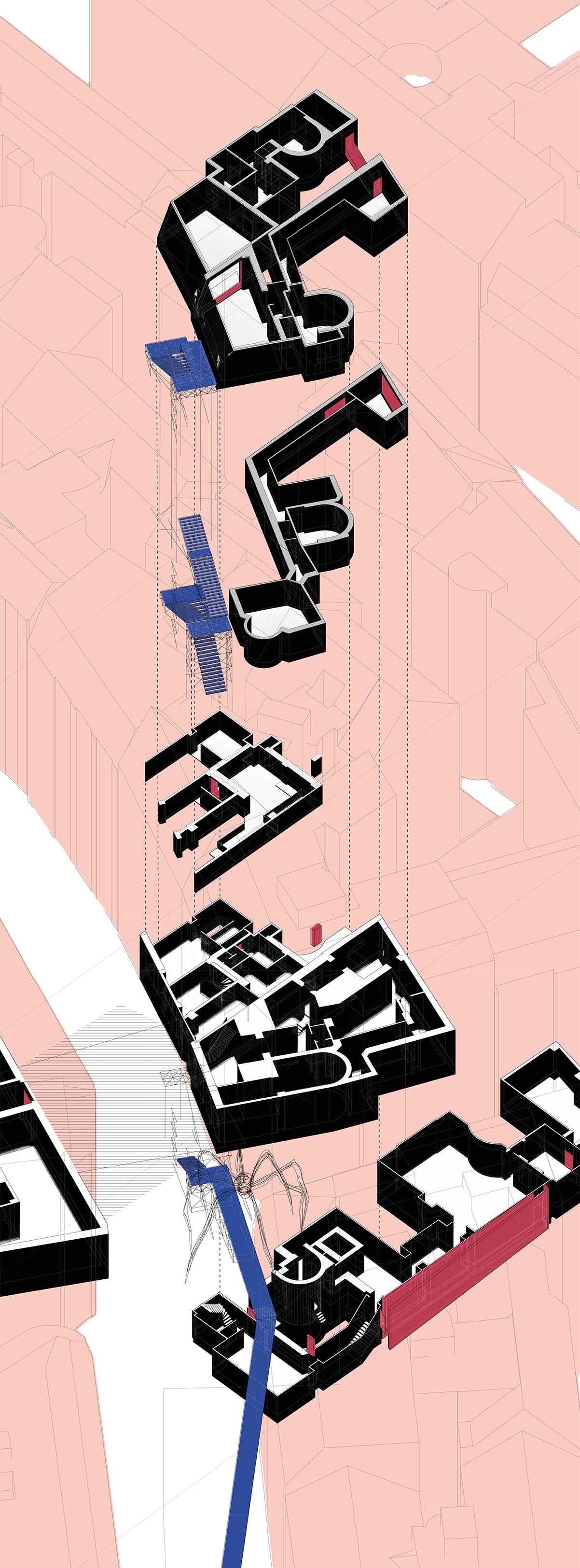



Discovering the inside of an inconspicious gallery space at Schleifmühlgasse,
Vienna drew our attention to the very momentary, empiric way of understanding
the city as a sequence of rooms, each one having a specific capicity of containing.
The grade of interest to their content is varying, depending on the very moment
one enters it. Aligned with the term of repetition, in the case of a city meaning its
structuralist appearance; Repetition of events, phases, structures and transformations
it serves as a lode for a museum that deems to intervene where unexpected,
by dissolving patterns, those who are manifest and those invisibely conceiled in the
subconscious minds of the creeping, running, strolling subject. It seeks to penetrate
the seemingly determinate border between the spaces where one goes and
those we rather don’t enter.
Approaching the artwork, from various sides, from below or from above, with a
great or small distance, meeting obstacles or beeing pulled by it, passing by or
heading towards it is the main subject to the exhibtion. Using the deja vu as an
educational tool and the spacial series in order to create an aesthetic unity, diversity
and retrieve an immaterial quality from the collection of artworks.
As research extends to the urban space, the museum should behave in a similar
way. An extension as well in curatorial as in spacial research.
While its space is enlarging (or shrinking), the exhibition constantly transforms into
another one, shifting its subject by subtle changes, taking away or adding artworks,
collections and information.
Thereby the result will not be one room, white and adjustable, adapted and renewed
for the sake of temporary exhibitions, always hiding the buerocratic monster
of research and organisation behind plasterboards. Rather it will be a metaphor for
what space in the city is, how it alters autonomously and how art attributes a performativity
to the viewers relative position within the tangible surroundings, built
and non-built.